The Special Collections Department provides access to the Library’s unique and historically significant documents, rare books, and ephemera. You can find manuscripts, prints, photographs, posters, post cards, greeting cards, 19th century travel books, the history of wine and beer, the history of printing and lots more. The treasures are endless. Michael K. Johnson, Manager, Special Collections, selected three rare astronomy books to highlight before the solar eclipse on August 21, 2017.
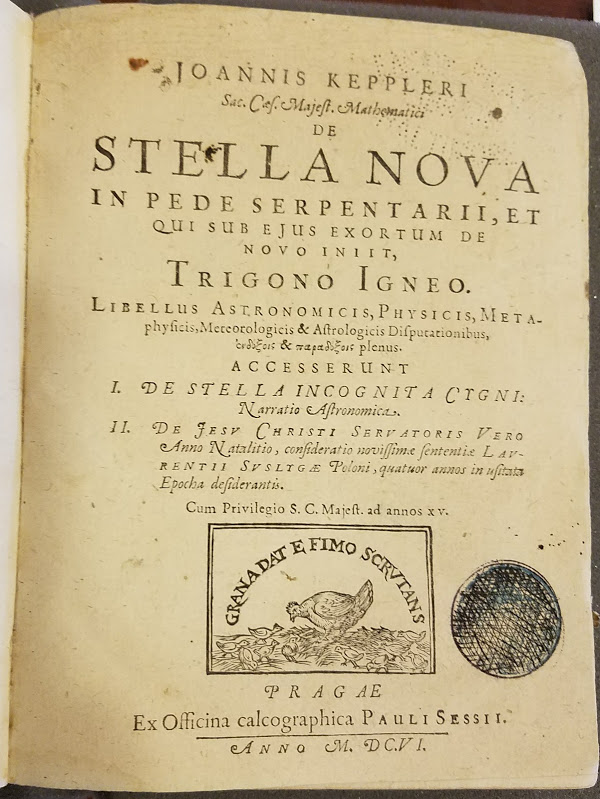
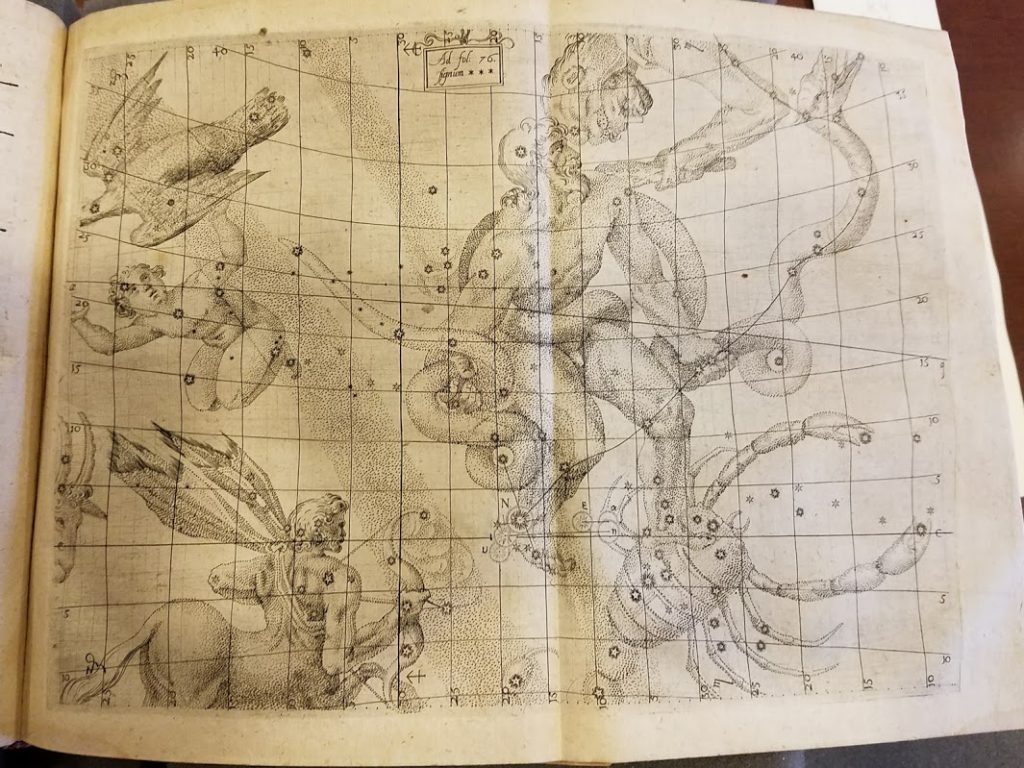
First, there is Johannes Kepler’s De Stella nova in pede Serpentarii (On the New Star in Ophiuchus’s Foot– Published in Prague, 1606). Kepler was a German Astronomer best known for the laws of planetary motion. Kepler documented the explosion of a supernova in 1604, which was the last such event observed in our Milky Way galaxy and would later be known as “Kepler’s supernova.” It is about 20,000 light years away from earth. An illustration in the book locates Kepler’s supernova in the foot of the Ophiuchus constellation.
Kepler’s star map shows the constellations of Ophiuchus (the Serpent Handler), Sagittarius and Scorpius. The Milky Way runs diagonally down from the left, and the “ecliptic,” or annual path of the Sun, runs horizontally through Sagittarius and Scorpius. A triple conjunction of Jupiter and Saturn took place in 1603, followed by a planetary massing with Mars in 1604. After the planetary massing, a “Nova” or bright star (“N”) suddenly appeared in the ankle of Ophiuchus on October 10, 1604. The new star was no ordinary star; it remained visible even in the daytime sky for over a year. The new star prompted widespread debate about what it might portend and whether the heavens could change. Now called Kepler’s nova, it was the second supernova to be observed in a generation. No supernova within the Milky Way galaxy has been observed since.
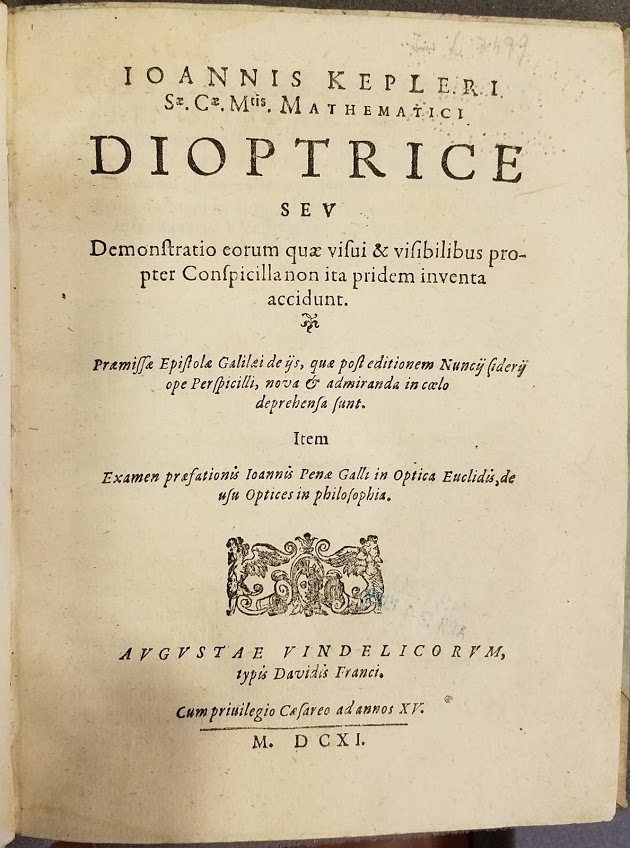
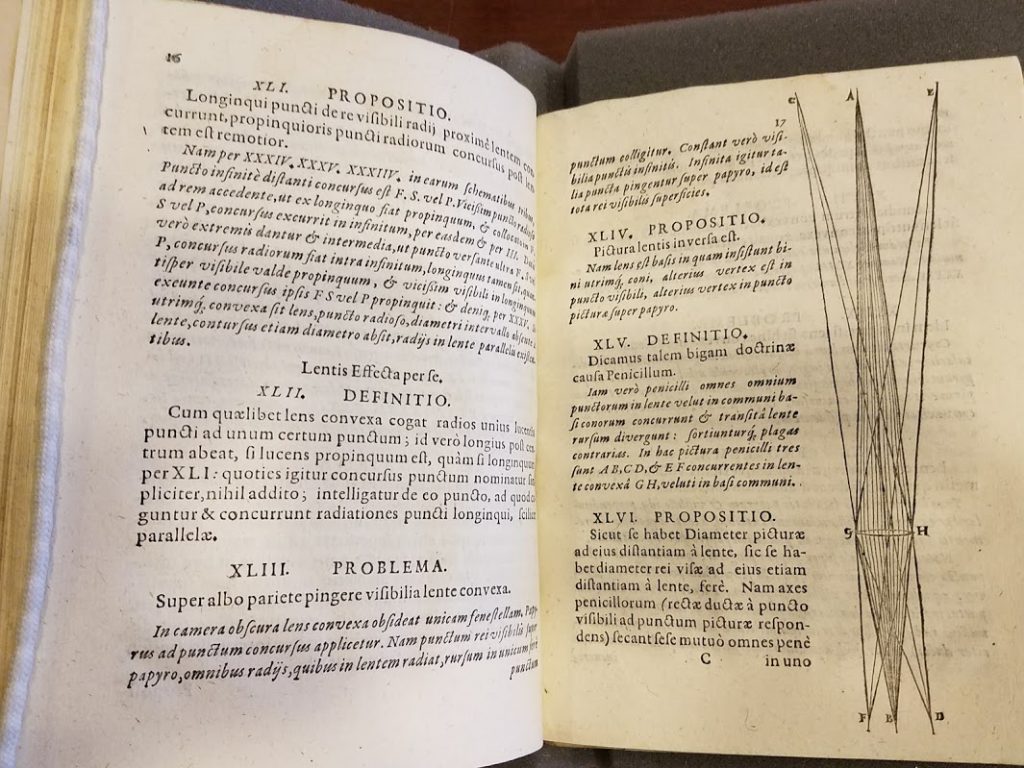
Next, there is Kepler’s Dioprice (published in 1611), which produced the first theoretical explanation of the Dutch telescope, guiding the discoveries of his contemporary, Galileo. Kepler’s theory of lenses played a crucial role in optics and were influential in the early history of telescopes, especially in the mid-17th century.

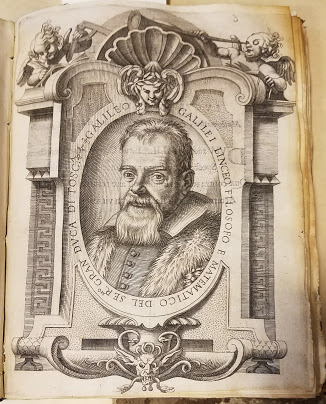
Finally, there is History and demonstrations concerning sunspots and their properties – Istoria e Dimostrazioni Intorno alle Macchie Solari, by Galileo Galilei, published Rome, 1613. In a 1611 book published by the Academy of the Lynx, the Jesuit astronomer Christoph Scheiner argued that sunspots are little planets circling the Sun like Venus. Galileo answered Scheiner with his 1613 book. Galileo’s detailed, full-page copperplate engravings set a new standard for presenting evidence about the Sun.
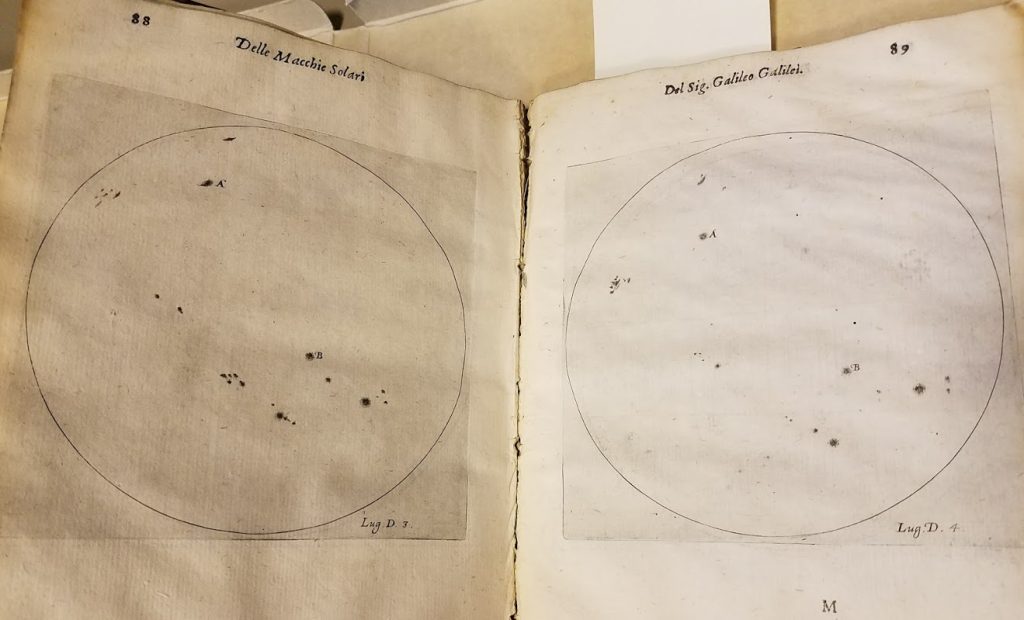
Galileo’s study of sunspots is a masterpiece of data visualization. The spots move together. They move slowly, each taking about a month to travel across the solar disk. Their shape is irregular; they form and disappear with irregular timing. The spots foreshorten as they approach the edge of the solar disk. All this proves they lie on or very near the surface, and are not little planets.
Conflicting ideas on the nature of sunspots reflected the basic split between the inflexibly philo-Aristotelian position of Scheiner, unable to forego the concept of an incorruptible heaven, and Galileo’s increasing acceptance of the new Copernican cosmology.
Reference in the Special Collections Department is available to all library customers through email and telephone requests. Please note that the department is open by appointment only within the hours listed here.
NASA created a quick guide about the solar eclipse.
You can find a free eclipse glasses pickup location here. Maryland State Library for the Blind and Physically Handicapped has glasses while supplies last.
Sources
Koestler, Arthur. The Sleepwalkers: a History of Man’s Changing Vision of the Universe. Penguin Books, 2014.
“Letters on Sunspots.” Galileo, 9 Jan. 2017, galileo.ou.edu/exhibits/letters-sunspots.
“Museo Galileo.” Galileo Portal – Museo Galileo, http://portalegalileo.museogalileo.it/egjr.asp?c=36304.